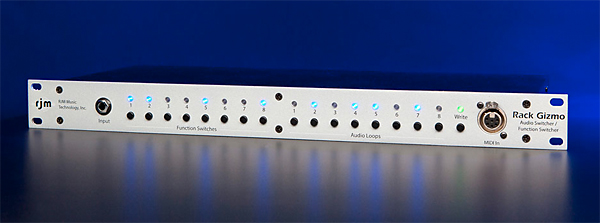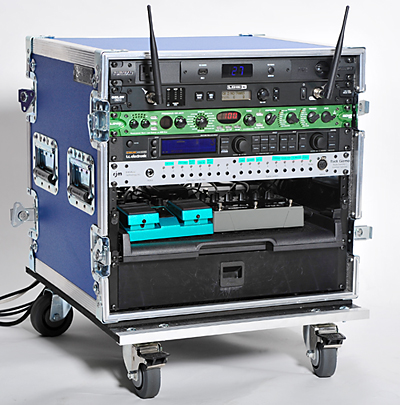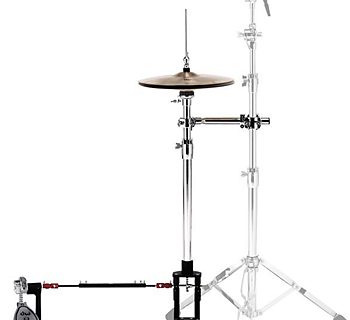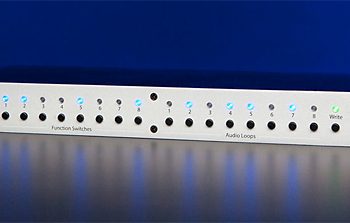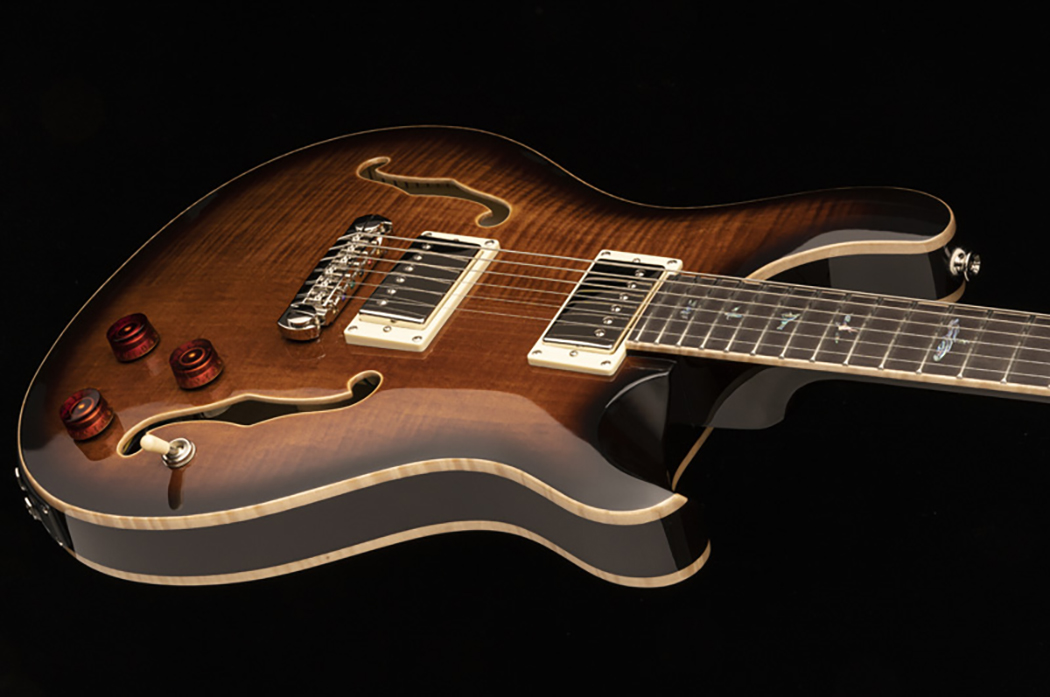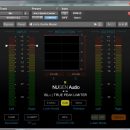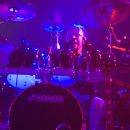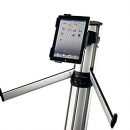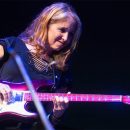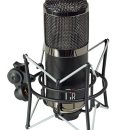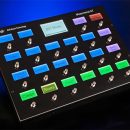The Boss AD-8 Acoustic Guitar Processor seems like a great idea in the making: take advantage of Boss’s COSM modeling technology to apply modeled acoustic guitar tones to any acoustic guitar in order to give your live sound the same character as that of an acoustic guitar miked up in the studio for recording.
With six different acoustic guitar models, controls to fine tune the modeled sound, and a host of additional features designed to make this a useful stage and studio tool (on-board reverb, tuner, feedback filter, and EQ), this could be all you need to bring with you to your next acoustic gig.
| Category | Value | Rating |
| Features | 20% | |
| Usability | 25% | |
| Sound | 25% | |
| Documentation & Support | 10% | |
| Price | 20% | |
| OVERALL RATING = 3.0 3.6 stars or better: Outstanding, WIHO Award 3 stars or better: Worth considering 2 stars or better: Suited to specific needs 1 star or less: Not recommended |
||
While the AD-8 did make a noticeable difference in our acoustic guitar tone, the results varied widely from one guitar to the next, and depending on the style of play, we found the AD-8 worked better or worse than the sound of our guitars through more traditional acoustic guitar DI boxes.
Given the significant differences in tone we achieved across multiple different guitars, it’s clear that your mileage will vary. This is one product that you absolutely must try with your guitar before determining whether or not it will ultimately work for you.
If your style lends itself more to fingerpicking, arpeggios, and legato lines, we think you’ll be happier with the AD-8 than singer-songwriters, as strummed chords more frequently lacked the richness and clarity of the unprocessed strumming sounds. Players looking to improve the sound quality of the Piezo acoustic output from certain solidbody electric guitars will definitely hear an improvement in their tone.
Features
The Boss AD-8 uses Roland’s COSM modeling technology to transform the Piezo pickup sound from your guitar into the full-bodied tone of a premium acoustic guitar that has been miked in a recording studio environment. The intent is to give your acoustic guitar studio-quality tone in the live performance venue, or perhaps just to make your cheap beater guitar sound like a pricier delight.
There are six acoustic guitar models to choose from: Martin D-28, Martin 000-28, Gibson J-45, Gibson B-25, Guild D-40, and a Jose Ramirez classical guitar. The D-28 and B-25 guitars were modeled and blended with the tone of Neumann U87 mics, the 000-28 and J-45 with a Neumann U67, and the last two guitars were blended with AKG C12 mic models. The Body knob adjacent to the model selection lets you dial in the amount of modeled tone that gets applied to your instrument signal.
A String Enhance knob accentuates overtones from the string, useful for enhancing the tone if you’re a finger-style player.
Onboard reverb can be dialed in from a multi-purpose knob. As you rotate through the settings, the sound changes from ambience to room reverb to hall reverb, with varying levels of each in between.
The AD-8 has memory for four presets plus however you have the front panel knobs set, and you can scroll through these five sounds via the Up/Down footswitches. The third footswitch toggles the effect On/Off.
There’s an onboard tuner, and you can choose to have it enabled while you play, or it can mute the output when engaged. Additionally, the AD-8 includes an anti-feedback feature. It can automatically detect and notch out a single problem frequency, which can be useful in many live situations.
An EQ section features Bass, Treble, Presence, and a sweepable midrange, but is not bypassable. As expected of a device like this, the AD-8 has a D.I. built in with both balanced XLR and unbalanced TRS output jacks, supporting both mono and stereo operation. Input is strictly quarter inch TRS.
The AD-8 also includes on its back panel a headphone jack and a dedicated output optimized for sending the output to an electric guitar amp. Not the best option for tone, of course, but Boss wisely assumed that many of you would attempt to play your acoustic through an electric guitar amp anyway, and this is a nice connection option.
The AD-8 prefers use of a Boss PSA style power supply, or you can connect it to other power supplies on your pedalboard as appropriate. It will also run off of six AA batteries, and Boss thoughtfully includes a set to get you up and running right away.
We would like to see the addition of phantom power support, though, so that it could be powered directly from a mixing board or acoustic guitar amp. And to really enhance your acoustic guitar rig, we would also like to see the addition of an effects loop for patching in other guitar effects like a compressor or delay unit.
Usability
As with other Boss products, the AD-8 is a breeze to work with. It only took a minute for us to get up and running in a variety of settings, both into a PA system as well as into a studio mixing console.
Dialing in our sounds was straightforward, as was use of the tuner. We appreciated the ability to fine tune the reference pitch, important if you’re playing in a classical setting and the piano’s A doesn’t quite hit 440 Hz.
Sound
We tested the AD-8 with a variety of different acoustic electric guitars that each featured onboard electronics: a pricey Taylor 610ce, a more budget-friendly Takamine EG530SC, and a Lightwave Atlantis, which features unique optical pickups. Because we know many of our readers will be curious, we also tested with a Music Man JPXI electric guitar using its Piezo acoustic output.
The AD-8 was capable of adding a high-end sparkle to the sound of darker sounding guitars like our Takamine and Lightwave, and when dialing in some ambience or reverb, legato melody lines and arpeggios took on new characteristics that we found sonically rewarding and vastly different from the unprocessed guitar sounds. The classical acoustic guitar model was especially fun to use when playing some Flamenco-style runs.
The sparkle in the tone, while a boon for the melodic playing, was a bust for our rhythm playing, as we couldn’t dial a bright metallic “clank” out of our sound, and it made strumming on our Takamine acoustic particularly harsh to listen to at times.
The reverb algorithms were well suited to acoustic guitar, and were essential to getting a useful sound out of the AD-8 without relying on additional outboard processing.
On a sour note, singer-songwriter types and others who like to strum big chords on their acoustics may find (as we did) that the D-8 imparted a blanket over the guitar tone that eliminated clarity from the bass strings on our guitar. It reminded us of early electric guitar modelers in the way that they seemed to capture the identifiable tone of an instrument without the body and soul of the instrument. There was a loss of clarity and richness to our tone, and we often times favored the un-processed tone of our acoustic guitars because of this lack of detail in our sound, even though the high end sounded very studio-like.
Our Taylor 610ce sounded best without the AD-8, suggesting that perhaps the AD-8 is better suited to guitars that are more tonally challenged than pricey hand-crafted instruments.
The Lightwave Atlantis, with its silent optical pickups, fared particularly well in all styles of play, and the overly bright high end that plagued our traditional acoustics in “active strumming” style was less distracting here.
The EQ was useful for boosting the low end, but the high frequency and presence controls were extremely noisy. Just the slightest hint of these EQ bands with our acoustic guitars presented noise that jumped out of our mixing board and into our PA or headphone mixes. As a result, the EQ was mostly unusable to us.
For those of you contemplating this device in order to sweeten the Piezo output from your electric guitars, you could be in for a treat here. With our Music Man John Petrucci signature guitar, we were able to dial in acoustic guitar sounds that were more naturally acoustic sounding than the straight Piezo output from the guitar.
Documentation and Product Support
The AD-8 has thorough documentation that clearly explained each of the controls and their functions. It also provided basic information regarding each of the modeled guitars and mics.
Price
The BOSS AD-8 (MSRP $558.50) sells for approximately $400 street, which makes it almost $100 more costly than other acoustic guitar DI-related products we would plug our instruments into.
Contact Information
Boss
www.bossus.com
| Evaluation Short-List |
|


